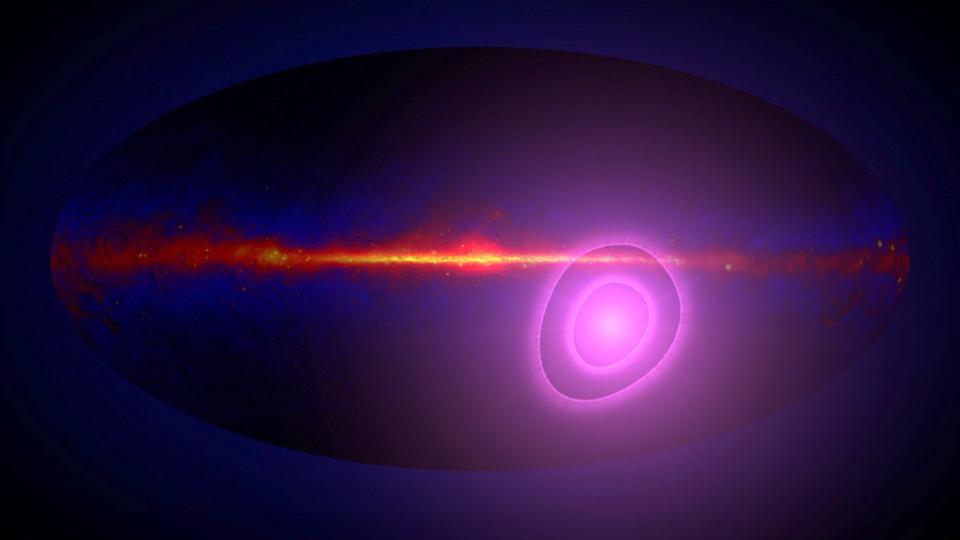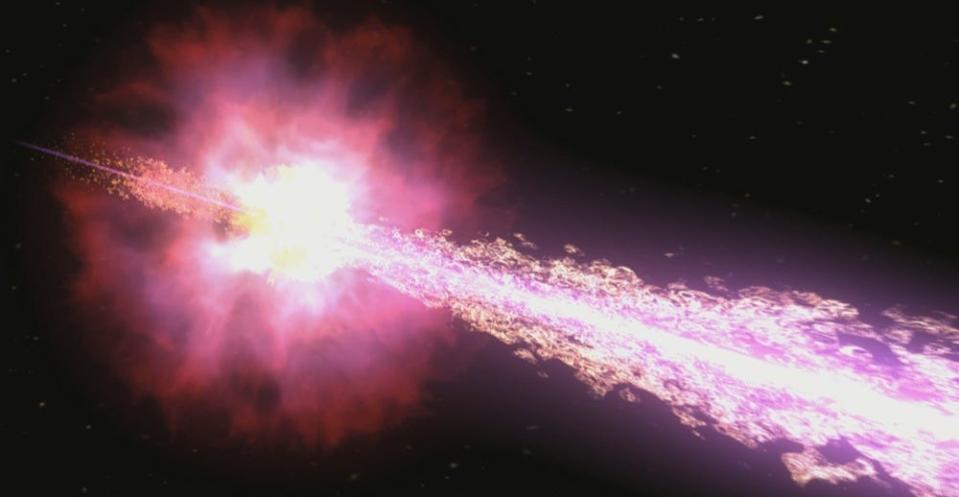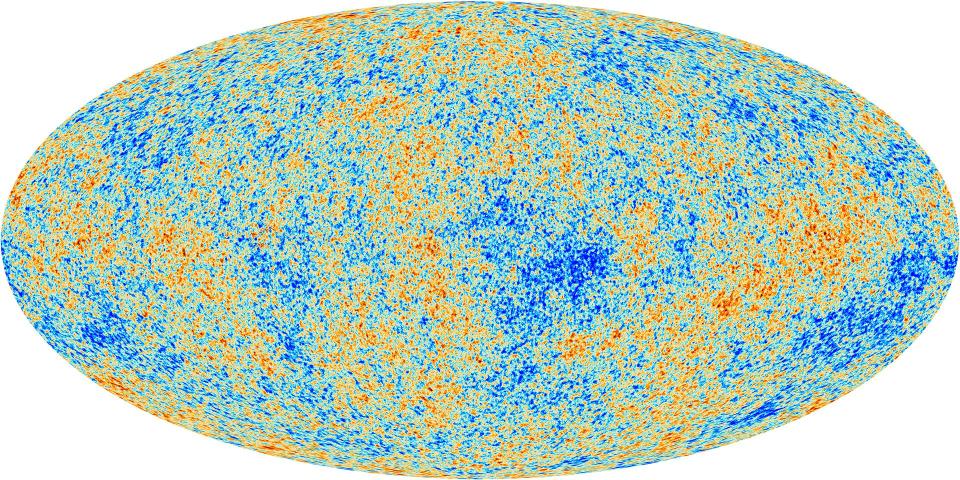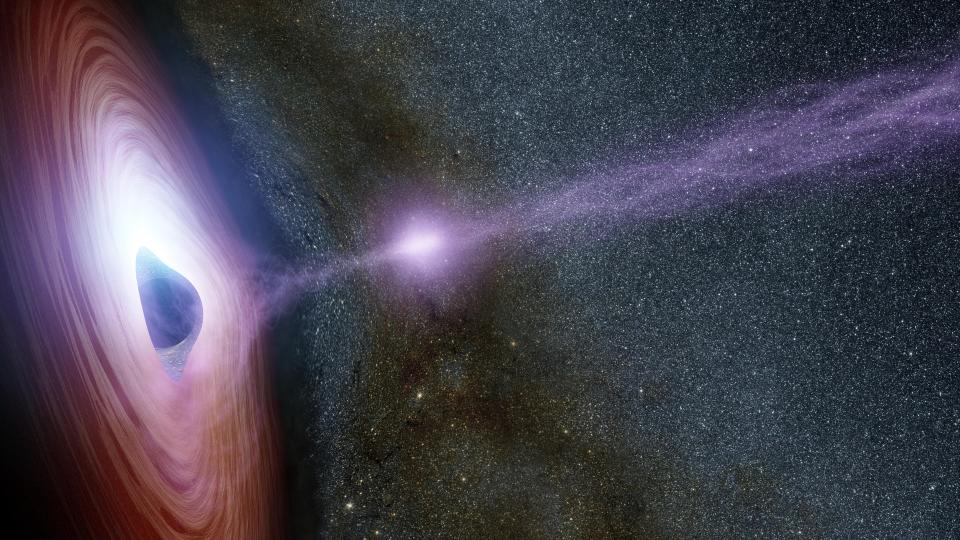-
Astronomers investigating the wallpaper of our universe came across a mysterious sign.
-
An unknown object appears to be emitting high-energy cosmic rays and gamma rays.
-
This pattern in the sky could help solve one of the greatest mysteries of astrophysics.
NEW ORLEANS – Astronomers using NASA’s space telescope have discovered a region of the sky that contains a mysterious concentration of some of the universe’s highest energy radiation.
The astronomers were mapping the background glow of gamma rays, the brightest and most energetic type of light in the electromagnetic spectrum. They were surprised that there were more gamma rays coming from one part of the sky than anywhere else.
Alexander Kashlinsky, a cosmologist at the University of Maryland and NASA, called the discovery a “complete shock” when he presented it at a meeting of the American Astronomical Society in New Orleans last Thursday.
The purple rings in the image below show where they think this signal is coming from. They are 95% confident that it is somewhere within the outer purple ring. More likely than not, it’s somewhere inside the inner purple ring, too. The orange strip across the center of the image is the plane of the Milky Way.


This feature may be linked to a hot spot of ultra-high-energy cosmic rays (UHECRs) coming from the same direction and having almost exactly the same size. These are the rarest and most energetic charged subatomic particles known as cosmic rays.
Unlike gamma rays — which are often detected shooting out of black holes and dying or dead stars — the origin of UHECRs is “one of the greatest mysteries in astrophysics,” NASA explained in a statement.
Because this gamma-ray feature seems to match a similar feature in UHECRs, it could be a clue in that mystery.
This discovery involves some of the most intense radiation in the universe. These gamma rays carry about 1 billion times the energy of visible light. And UHECRs have 1 billion times more energy than gamma rays.


Neither Kashlinsky nor his colleagues know what causes this super-energetic signal in the universe.
But he says it’s probably coming from some as-yet-undiscovered phenomenon within 300 million light years of us.
“It’s a huge area of the sky where it’s hard to know exactly what’s happening,” Kashlinsky said.
View the wallpaper of the globe
Kashlinsky and his colleagues discovered this new mystery while analyzing 13 years of data from NASA’s Fermi Gamma-ray Space Telescope.
They were looking for additional signs of a pattern in the cosmic microwave background – the lingering radiation from the first light that traveled freely through the universe after the Big Bang. The CMB is like wallpaper behind all the galaxies in the universe.


There is one odd thing about it, though. The CMB is warmer (more microwaves) towards the constellation Leo and cooler (less microwaves) in the opposite direction.
Astronomers think this is simply due to the motion of our solar system against the background, which is about 230 miles per second.
It’s like an ambulance passing by, where the tire has one pitch as it approaches you, and sounds like another pitch as it recedes in the distance. This pattern is called a bipolar in the CMB.
Kashlinsky wanted to test that theory about the movement of our solar system by checking to see if a similar dipole pattern exists in other types of light.
If other forms of light have different patterns than the CMB, that would mean that the movement of our solar system is not the only cause of the discrepancy. Something else is going on — perhaps an event that has not yet been discovered in the first micro-moments of the birth of the universe.
Such a discovery “could give us insight into the physical processes that were operating in the very early universe, perhaps less than a trillionth of its age,” coauthor Fernando Atrio-Barandela, professor in theoretical physics at the University. de Salamanca in Spain, said a NASA press release.
An unexpected clue in one of the greatest mysteries of the cosmos
So Kashlinsky’s group assessed the gamma-ray background — a diffuse gamma-ray glow that creates black holes and supernovae throughout the cosmos.


They found a distinct pattern, but it was 10 times stronger than it should be from the motion of our solar system.
Furthermore, the bipolar pattern did not match that in the CMB. Instead, it came with a pattern of UHECRs.
The 2017 discovery that UHECRs had their own bipolar pattern added to the mystery surrounding them. Now, the discovery that gamma rays have a similar dipole offers a new clue.
A paper describing the discovery was published in The Astrophysical Journal Letters on 10 January.
Kashlinsky and his team think that the gamma-ray and UHECR patterns may be related, but they are not sure how or why. There may be some unknown object or process out there in the universe producing the gamma rays and UHECRs.
To solve the mystery, “more work and better, more refined measurements of both are needed,” Kashlinsky told Business Insider in an email.
To that end, his team plans to analyze more Fermi telescope data in the future.
Read the original article on Business Insider